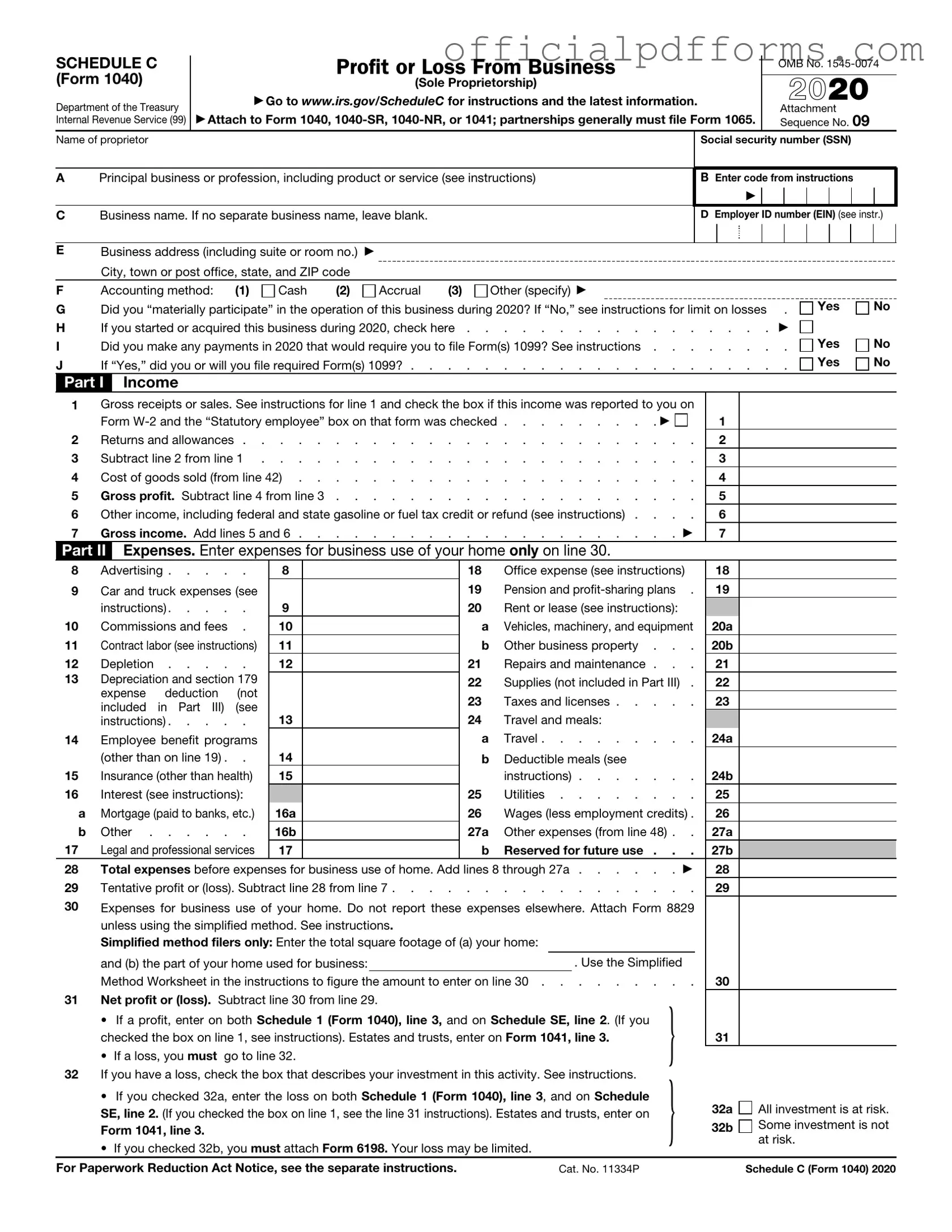Fill in a Valid IRS Schedule C 1040 Form
The IRS Schedule C 1040 form is a crucial document for individuals who are self-employed or operate a business as a sole proprietorship. This form allows taxpayers to report income, expenses, and profits from their business activities, ensuring compliance with federal tax regulations. Understanding how to accurately complete this form is essential for managing your finances and fulfilling your tax obligations.
Ready to tackle your Schedule C? Click the button below to get started!
Access Form Online
